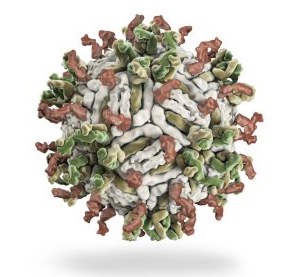Dengue Virus-Like Particles
Dengue fever is ranked by the World Health Organization (WHO) as the most critical mosquito-borne viral disease, globally. More than 40 percent of the world’s population, in more than 100 countries are at risk of dengue infection. There are no vaccines available to prevent infection with dengue virus (WHO, 2022).
Virus-Like Particles (VLPs) are an emerging vaccine technology, and very effective in next-generation IVD assay development. The Native Antigen Company offers an exclusive range of Virus Like Particles for all Dengue Virus serogroups, as well as a multipack containing 100ug each of VLPs from serotypes 1-4. Years of success in producing the VLPs allowed us to optimise the manufacturing methods; therefore, we can offer a high-grade product for your research needs.
About the Dengue Virus Like Particles
See our full range of Virus like particles. Click here.
References
Metz et al (2018). Dengue virus-like particles mimic the antigenic properties of the infectious dengue virus envelope. Virol J. 2018 Apr 2;15(1):60 PMID: 29609659
| Serogroups of the Dengue Virus | Product Description | Regular Price | |
| Dengue Virus Serotype 1 VLP – The Native Antigen Company | Recombinant Dengue Virus serotype 1 virus-like particles consisting of Envelope, pre-Membrane and Membrane proteins, produced in mammalian HEK293 cells | £803.25 – £2,765.25 excl. VAT | Order now |
| Dengue Virus Serotype 2 VLP – The Native Antigen Company | Recombinant Dengue Virus serotype 2 virus-like particles consisting of Envelope, pre-Membrane and Membrane protein produced in mammalian HEK293 cells | £664.88 – £2,891.25 excl. VAT | Order now |
| Dengue Virus Serotype 3 VLP – The Native Antigen Company | Recombinant Dengue Virus serotype 3 virus-like particles consisting of Envelope, pre-Membrane and Membrane protein produced in mammalian HEK293 cells. | £803.25 – £3,432.38 excl. VAT | Order now |
| Dengue Virus Serotype 4 VLP – The Native Antigen Company | Recombinant Dengue Virus serotype 4 virus-like particles consisting of Envelope, pre-Membrane and Membrane protein produced in mammalian HEK293 cells. | £803.25 – £2,810.25 excl. VAT | Order now |
| Dengue virus-like particles serotypes 1-4 – The Native Antigen Company | Multi-pack of all Dengue Virus VLPs, containing 100ug each of VLPs from serotypes 1-4. | £2,488.50 excl. VAT | Order now |
We also offer a range of Dengue proteins and antibodies to support ongoing research into the epidemiology, vaccines, diagnostics, and therapeutics. Click here for further information.

Get in touch
